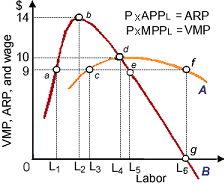Even though workers volunteered to work as "for free", such purely competitive firm would never hire more than: (i) L2 workers. (ii) L3 workers. (iii) L4 workers. (iv) L5 workers. (v) L6 workers.

Can anybody suggest me the proper explanation for given problem regarding Economics generally?